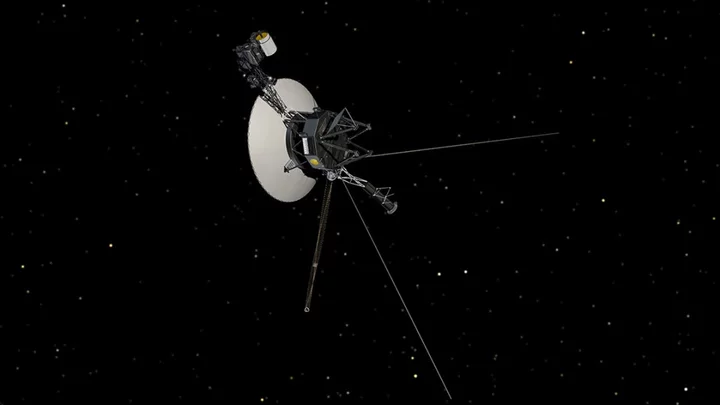Voyager 2: Nasa receives ‘heartbeat’ signal from missing spacecraft
Nasa has received a “heartbeat” signal from its Voyager 2 spacecraft – but it is still lost in space. Over the weekend, Nasa announced that it had lost contact with Voyager 2, which was launched in 1977 and is now hovering on the edge of the solar system. The space agency had inadvertently sent a message to the craft that instructed it to turn its antenna two-degrees from Earth. That in turn meant that it lost contact with the Deep Space Network, or DSN, a collection of ground-based antennas that allow for contact with distant spacecraft. Engineers feared that they would not hear from Voyager 2 until October at the earliest. Then, it will automatically adjust itself, resetting its orientation and pointing the spacecraft back towards the Earth, when the space agency hoped it would make contact. But Nasa has now heard a “carrier signal” from Voyager 2, sent back as the Deep Space Network scanned the sky. The space agency compared the signal to a “heartbeat”, in that it confirms that the probe is still safe and sending messages back down to Earth. Engineers will now try and send commands to Voyager 2, instructing it to re-orient itself and point back at Earth. If that happens then it will be able to continue on again as normal, flying out into interstellar space and providing scientists with information as it goes. The instructions might not get through, however. If that happens then engineers will be powerless to correct their mistake. That will mean they will be back to waiting until October, which will bring the point at which the spacecraft’s software will automatically tell it to reset its direction. Read More Giant space ‘umbrella’ tethered to asteroid could protect Earth from climate crisis Songs, books and films inspired by the blue moon ESA’s Euclid space telescope captures glittering galaxies and stars in first images

Nasa has received a “heartbeat” signal from its Voyager 2 spacecraft – but it is still lost in space.
Over the weekend, Nasa announced that it had lost contact with Voyager 2, which was launched in 1977 and is now hovering on the edge of the solar system.
The space agency had inadvertently sent a message to the craft that instructed it to turn its antenna two-degrees from Earth. That in turn meant that it lost contact with the Deep Space Network, or DSN, a collection of ground-based antennas that allow for contact with distant spacecraft.
Engineers feared that they would not hear from Voyager 2 until October at the earliest. Then, it will automatically adjust itself, resetting its orientation and pointing the spacecraft back towards the Earth, when the space agency hoped it would make contact.
But Nasa has now heard a “carrier signal” from Voyager 2, sent back as the Deep Space Network scanned the sky. The space agency compared the signal to a “heartbeat”, in that it confirms that the probe is still safe and sending messages back down to Earth.
Engineers will now try and send commands to Voyager 2, instructing it to re-orient itself and point back at Earth. If that happens then it will be able to continue on again as normal, flying out into interstellar space and providing scientists with information as it goes.
The instructions might not get through, however. If that happens then engineers will be powerless to correct their mistake.
That will mean they will be back to waiting until October, which will bring the point at which the spacecraft’s software will automatically tell it to reset its direction.
Read More
Giant space ‘umbrella’ tethered to asteroid could protect Earth from climate crisis
Songs, books and films inspired by the blue moon
ESA’s Euclid space telescope captures glittering galaxies and stars in first images

